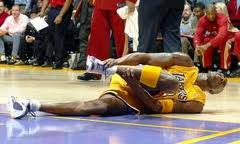 An ankle sprain is one of the most common injuries experienced by athletes as well as by people in the workplace. Many people use the terms interchangeably but there are specific differences. Knowing the difference means understanding the damage that occurs to the ligament and the implications for rehabilitation and a successful return to sport or activity.
An ankle sprain is one of the most common injuries experienced by athletes as well as by people in the workplace. Many people use the terms interchangeably but there are specific differences. Knowing the difference means understanding the damage that occurs to the ligament and the implications for rehabilitation and a successful return to sport or activity.
A ligament is an elastic structure holding bones together and stabilising a joint, for example the ankle or knee joint. Ligaments usually stretch within their limits and then go back to their normal positions. When a ligament is forced to stretch beyond its normal range a sprain occurs. A severe sprain causes tearing of the elastic fibres.
Grading a Sprain
Grade 1- slight stretching and some damage to the collagen fibres of the ligament. This is often referred to as a ‘strain’
Grade 2- partial tearing of the ligament. There may be complete tears of some but not all of the collagen fibres of the ligament. Characterised by moderate pain and swelling, reduced range of motion and possibly some joint instability
Grade 3- complete tear/rupture of the ligament. The patient will present with significant tenderness and swelling and gross joint instability.
The initial aim of physiotherapy treatment is to decrease pain and swelling using the R.I.C.E regime (Rest, Ice, Compression and Elevation). We encourage our patients to weight bear as tolerated and crutches may be required for Grade 2and 3 sprains. Restoration of joint range of motion in the early stages of recovery is also important to prevent stiffness. As soon as pain allows, proprioceptive training is incorporated as poor proprioception is a major cause of recurrent ankle sprains and joint instability. Once range of motion, flexibility and strength has been restored, our physiotherapists will supervise a gradual return to activities that may require turning or twisting of the ankle.
Physiotherapy management of all ankle sprains follows the same principals of treatment however the recovery time for ligament tears will be longer than that of a sprain. A ligament tear with gross joint instability may require an MRI for definitive diagnosis and referral to an Orthopaedic specialist.
In the past, many patients will have received medical advice to stay completely off the ankle for 1-2 weeks until the swelling goes down, then seek physiotherapy. Things have changed and we commence Physiotherapy immediately to reduce the swelling and inflammation and get the patient walking whilst supported. Athletes now have faster recovery and less longer term issues with this latter approach.
Written by Lisa Cheetham

Lisa Cheetham has been practicing as a Physio since the late 1990’s. She spent 12 years working at Royal North Shore Hospital in a variety of areas including the very intense and busy orthopaedic unit. Lisa was appointed as Senior Clinical Educator at North Shore a position she continued for 5 years. During this time she was not only responsible for her own workload but also that of many undergraduate students in the acute hospital setting.
Lisa has been with MGS Physio for a few years now. In addition to her work in the clinic Lisa also instructs some of our hydrotherapy classes. Lisa has a particular interest in post-operative orthopaedic management which means if you have had surgery Lisa would like you to see her. Like all the MGS physio’s Lisa is also passionate about hands on treatment for musculoskeletal and sports injuries.
